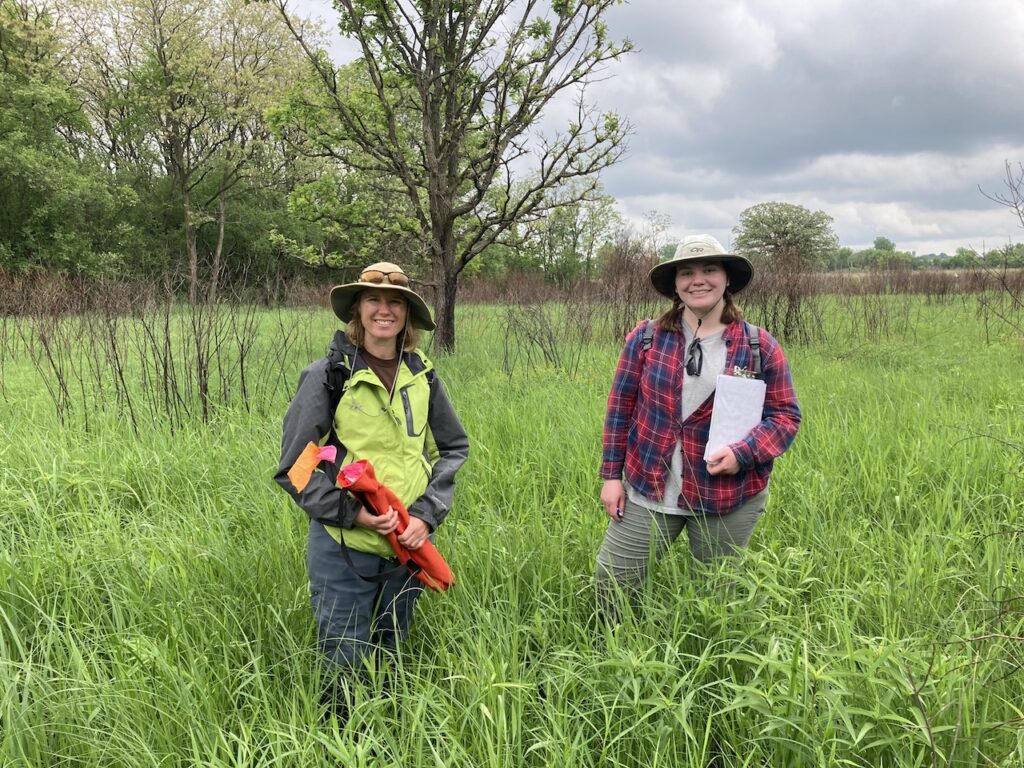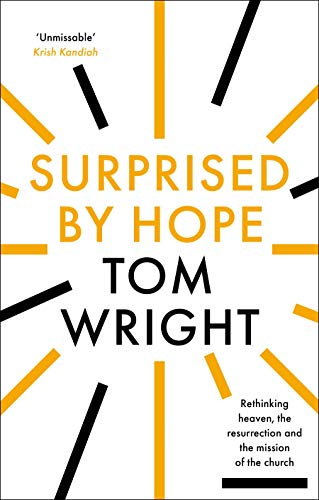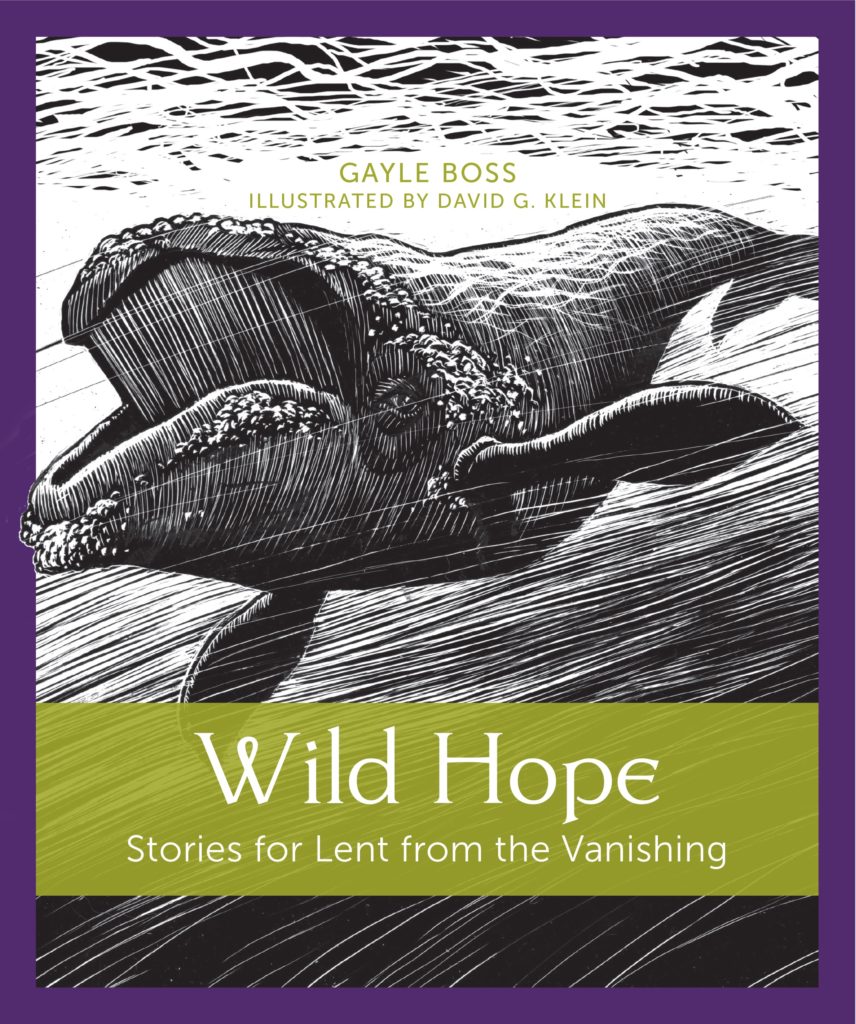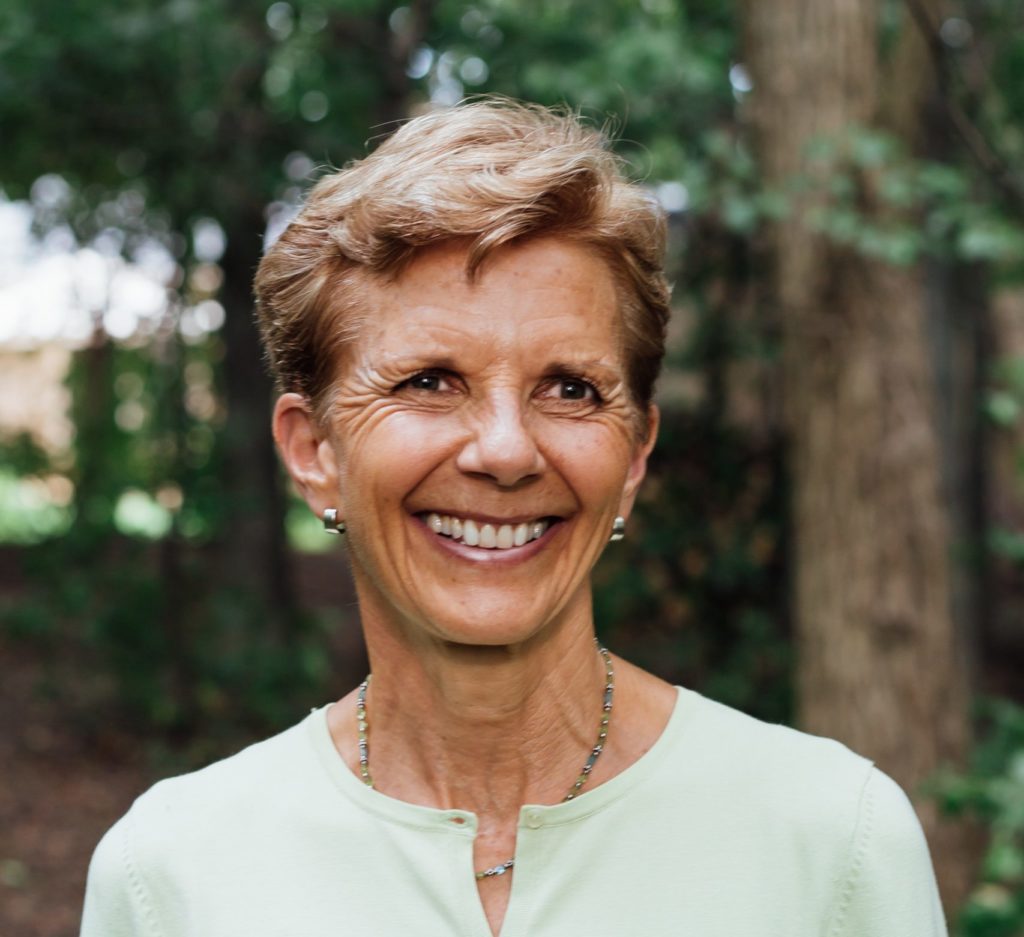I wrestle with staying hopeful.
My heart and mind are often painfully aware of climate chaos and the ongoing loss of the life of God’s earth
But I know those who follow Jesus and love God cannot help but to also be people who see light and hope. Everyday we are alive on this earth, we should seek out and hold onto gratitude for the goodness around us that comes from God. That awareness feeds our hearts and fuels our persistence.
As you begin a new year, I encourage you to take time to meditate on the year that has just past. What was good? Where did you sense God’s grace? What are you thankful for? What did you learn? In general? About protecting and restoring Creation as part of a whole Christian faith-life?
Here are just some of the things I discovered by looking back at my own year.
1. Bounty from the Garden: My wife Mayumi has been building the soil of our pesticide-free garden for more than 15 years. In 2022, she harvested a wonderful bounty – garlic, Asian pears, beets, kale, green beans, parsley, ground cherries, and even okra. During the height of the okra season, she was harvesting and cooking it in delicious ways almost every day. God’s Creation enables us to taste and see that God is good.
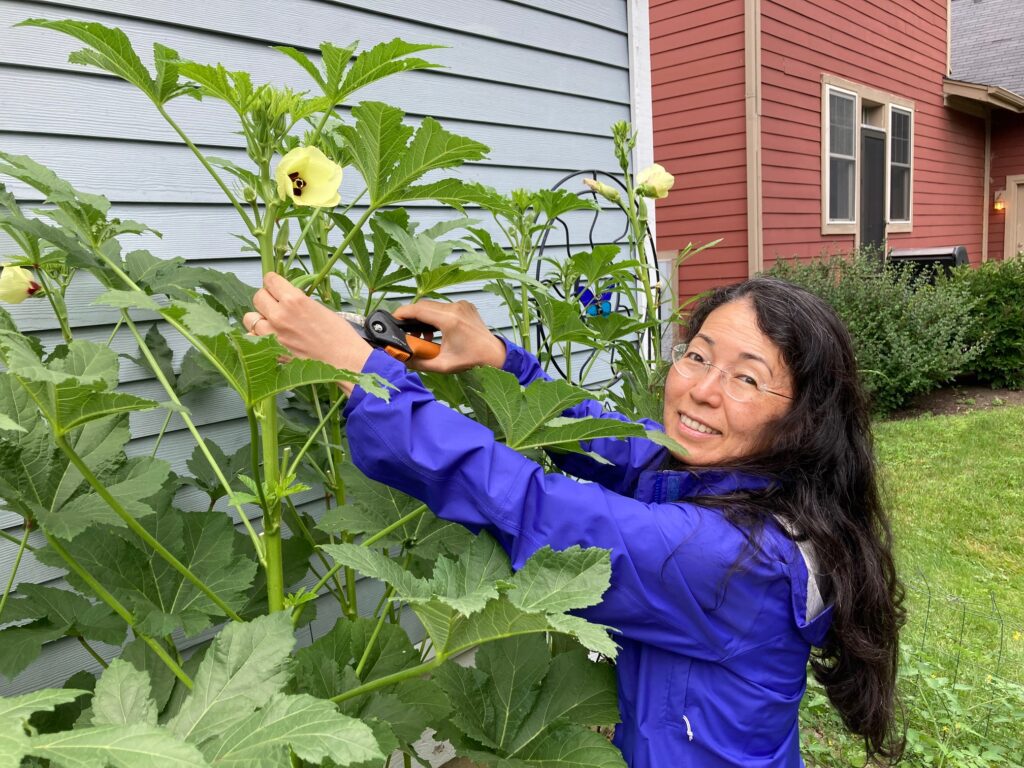
My wife Mayumi harvesting okra from our garden that she will cook later. Through her careful tending, the garden produced wonderful food again this past year.
2. Earthkeepers Podcast: Early in 2022, James Amadon and Forest Inslee interviewed me for their Earthkeepers Podcast, a production of Circlewood. Circlewood is an organization in the Pacific Northwest that is working to accelerate the greening of the Christian faith. I first interviewed James for this blog back in 2017 when he was still early on in his move from being a church pastor to becoming Circlewood’s executive director. I’m delighted to see that his gifts are bearing so much fruit. I was also honored that I would be chosen to be interviewed. Through the Earthkeepers Podcast, James and Forest are interviewing fascinating people on the edge of faith and ecology.
3. Good and Brave People: In 2022 I had a good conversation with the elder of a church in Davenport, Iowa. He had given a sermon about the Biblical basis and faithfulness of Creation care. He had been nervous but felt compelled to bring up the topic. We need more brave people like him.
Through my work and my own personal seeking, I continue to have the chance to encounter brave farmers. They are willing to go against the current of conventional practices and raise crops in ways that minimize harm to God’s earth. These same ways produce excellent, healthy products, from vegetables and meat to grains and flowers. Farmers like these put their livelihoods on the line in their choice of how they will raise food to sell. Their faith and values are profoundly inspiring to me.
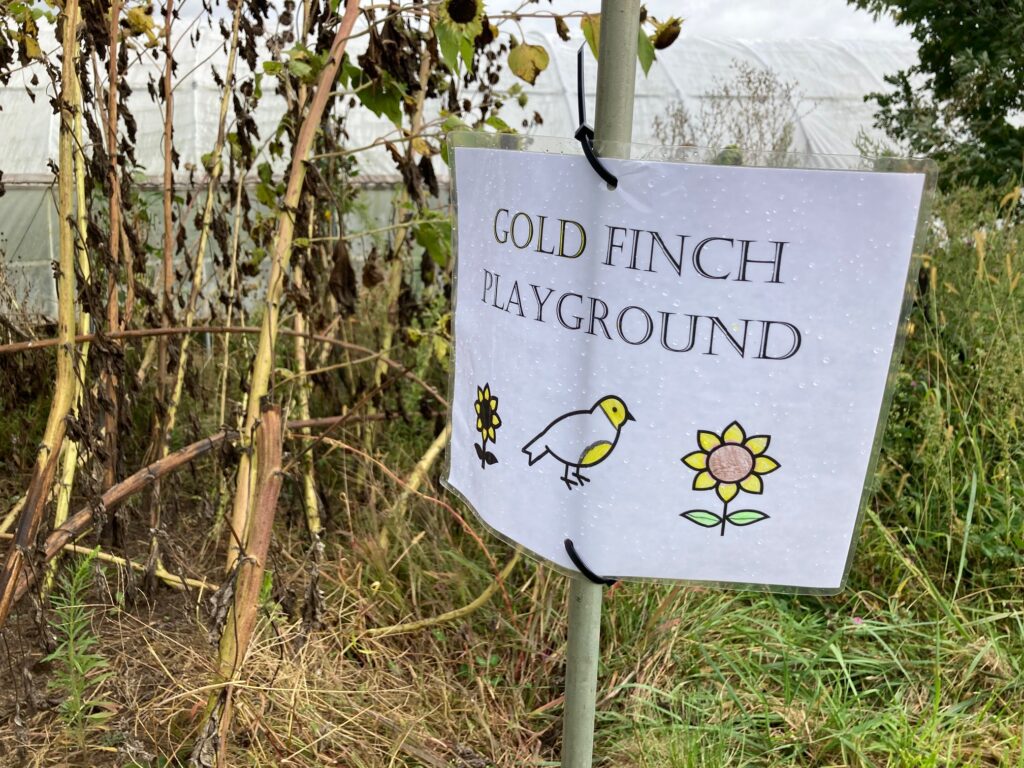
This sign at Broadview Farm in Marengo, Illinois, highlights an area planted with sunflowers specifically to feed goldfinches. I’ve been fortunate to meet many farmers who keep the life of God’s world in mind as they plan the uses of their farm.
Over the past years I’ve had the opportunity work with and help a number of public conservation and forest preserve districts work to improve the sustainability of their farmland management systems. These are public organizations with thousands of acres of farmland which have largely been farmed with a chemical-reliant, production-first approach for decades. I have been blessed to work with staff who care deeply about the land and water under their management.They are creatively advocating within their institutions to move more earth-friendly farming requirements forward. They do this even when others in their institutions don’t get it. I admire them.
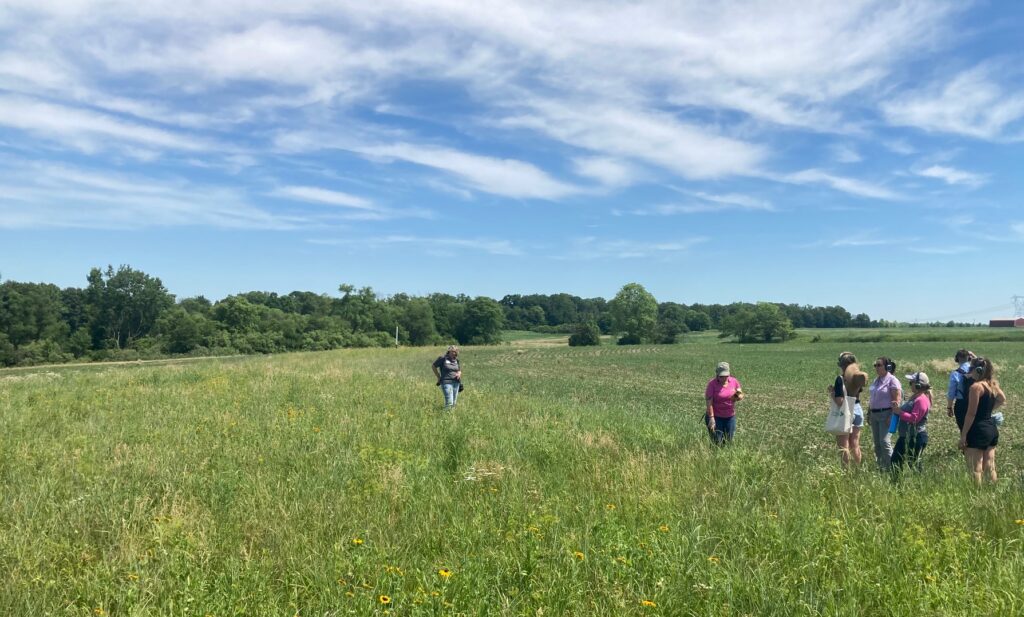
During a 2022 field walk at a farm field owned and managed by the Forest Preserve District of Will County, participants were shown a prairie strip planted perpendicular to the downward slope of the field. The strip provides habitat for wildlife while slowing erosion from farmed land.
4. Food Forest and Land Stewardship Near Galesburg: This summer, my wife, eldest son, and I visited friends who had purchased some beautiful land near Galesburg. Just one of the ways they are tending this land is by replacing conventional corn and bean fields with trees that will produce nuts and fruit. They have a long-term vision and love the land very much. Their willingness to try new things, work hard, and build community inspired us greatly.
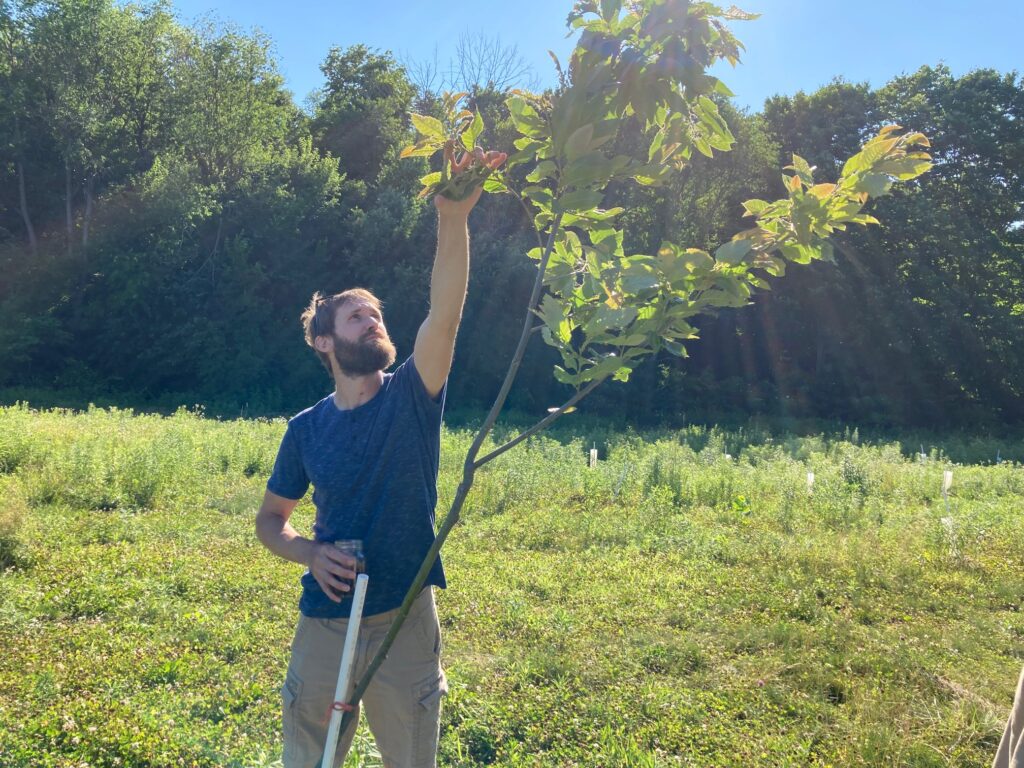
Our friend Craig showing us one of the chestnuts he and his wife planted on their land near Galesburg.
5. Positive News in the World: In the midst of many negative forces, we cannot forget that Creation, when given the chance, can begin to rebound. Check out this story about the response of nature in New York Harbor, which used to be a cesspool of pollutants. A key point to remember is that in a world in which we are all tempted to sin, good regulations and laws are needed.
We can also forget that people can push for decency and goodness in their society….and succeed. Check out news of this ruling in Maryland that preserves the right of homeowners to garden and landscape in ways that enable nature to thrive. A brave couple made that happen.
6. Birds of the Garden: We had three surprise avian visitors this year to our largely naturally landscaped yard. Two were birds – a nuthatch and red-bellied woodpecker – that came to the bird feeder and thrive around trees. After 19 years, our yard has three bur oaks, a pin oak, and two hackberries that are all of decent size. I particularly appreciated the nuthatch. It is able to descend headfirst down the trunk of a tree with perky little movements. Its upturned beak is perfectly suited for seeking out food in the nooks and crannies of tree bark. It also, as this excellent article explains, stockpiles seeds in the bark of trees for accessing later.
The third bird was a red-tailed hawk. It somehow caught a rabbit, despite the restricted air space of our small property. The hawk consumed the rabbit on top of a rain barrel with little concern for the sensibilities of the people looking at it from their dining room.
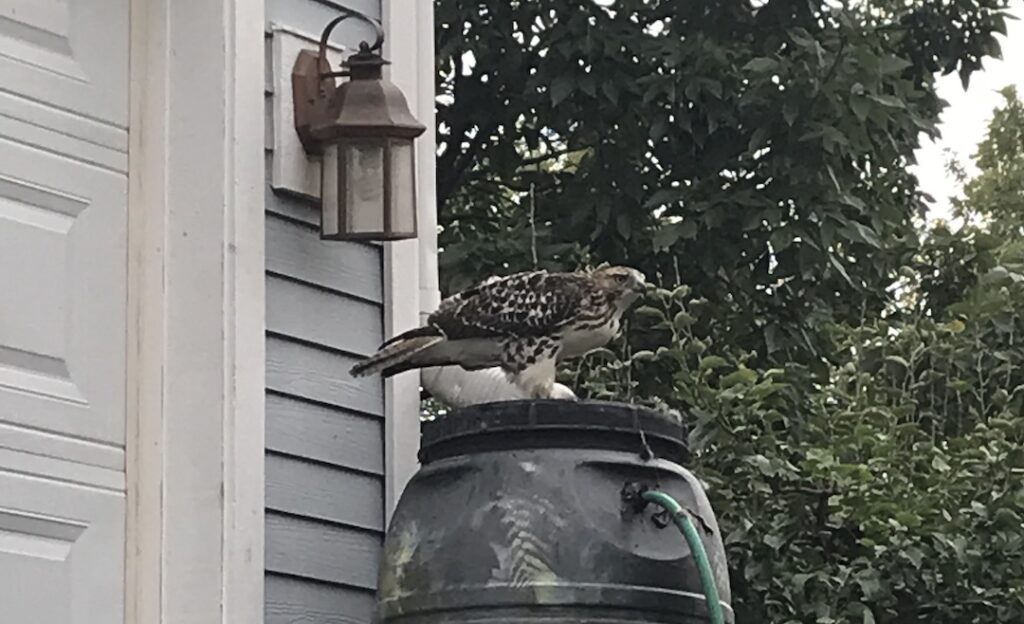
This red-tailed hawk has the remains of a rabbit on the top of the rain barrel in our yard during a rain day. (Our son Owen snuck up close to get this picture)
7. Thought-Provoking Books: There were two books I read in 2022 about Christianity and Creation that were so thought-provoking that I read them twice – Victoria Loorz’s Church of the Wild and Norman Wirzba’s This Sacred Life. I’m grateful to the authors, their editors, and their publishers for producing these books.
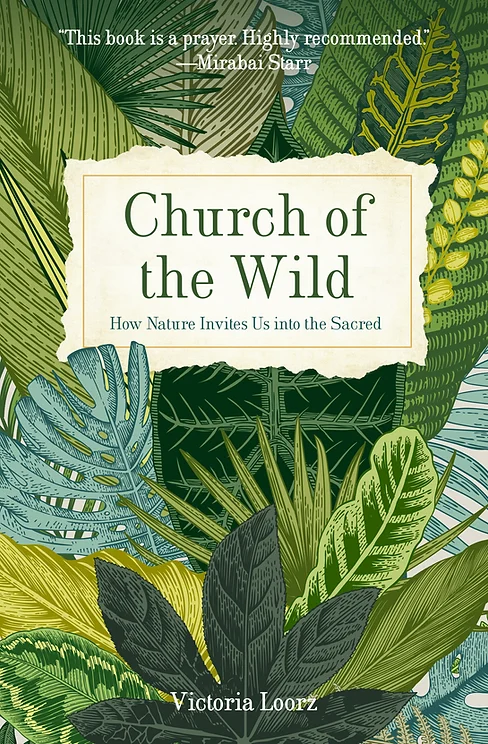
This book was insightful and moving. it also used language far from traditional conceptions of Christianity. I
8. Inspired Words: I continue to find inspiration (and challenge) in reading the Bible. Thanks to my interview with John Kempf, I now have Job 12: 7-10 indelibly etched into my consciousness. How much better would we be faithful servants of God if we actually did ask the beasts, the birds, the bushes, and the fishes of the sea and were willing to listen and learn from them? What if we remembered that our lives and the livings of all living things are in the hand of the God? We are created kin.
What are you grateful for in 2022?
Write those things down. Talk about them. Feed your heart and soul with them. Share them if you would.
Many blessings to you all.


